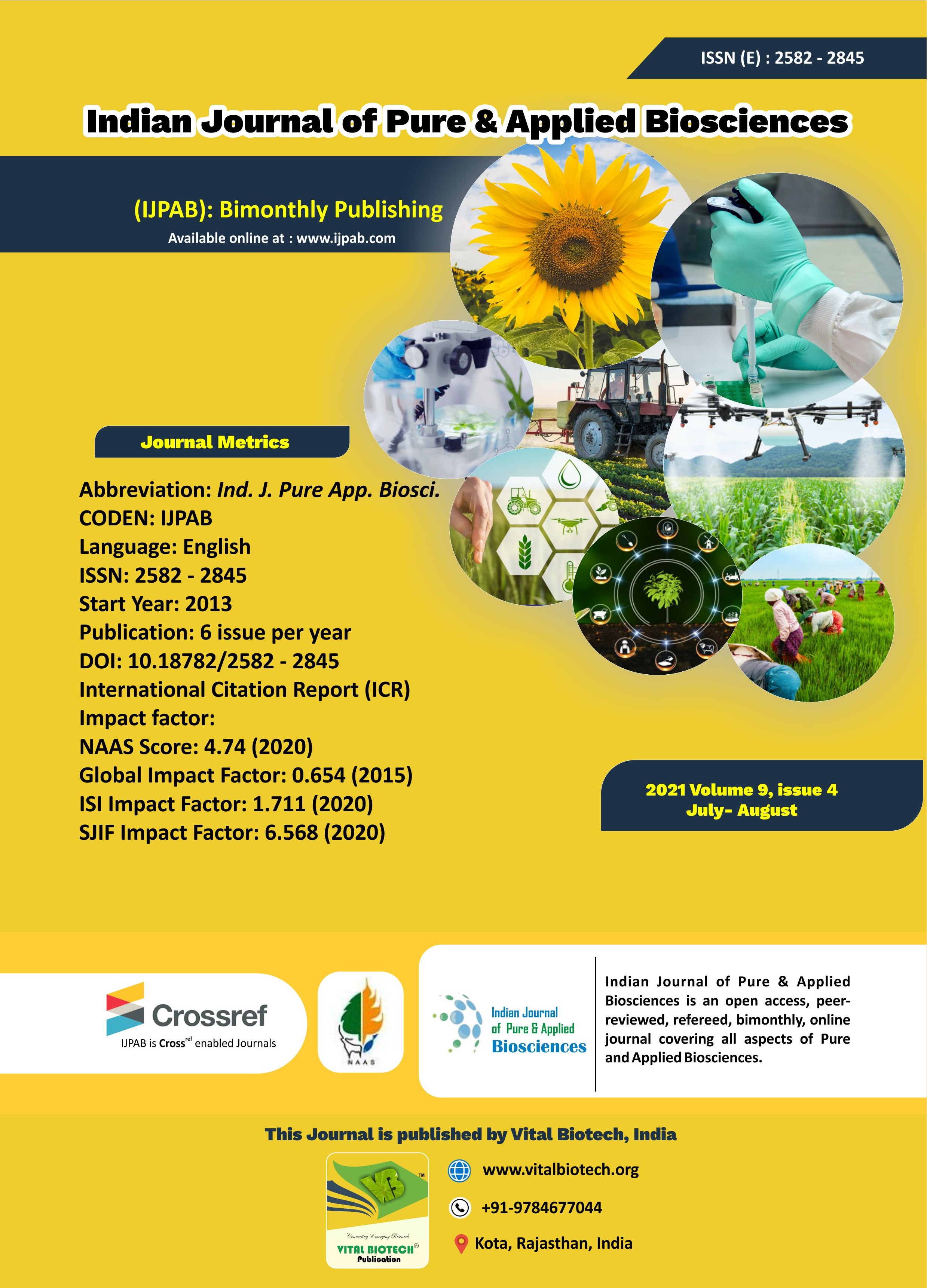-
No. 772, Basant Vihar, Kota
Rajasthan-324009 India
-
Call Us On
+91 9784677044
-
Mail Us @
editor@ijpab.com
Indian Journal of Pure & Applied Biosciences (IJPAB)
Year : 2021, Volume : 9, Issue : 4
First page : (180) Last page : (185)
Article doi: : http://dx.doi.org/10.18782/2582-2845.8701
Biology and Morphology of Bactrocera dorsalis and Bactrocera zonata on Guava under Laboratory Conditions
Ghulam Murtaza1*, Fazlullah2, Taskeen Ahmad3, Muhammad Ramzan4, Muhammad Daud3, Shahid Iqbal5, Abid Ali6, Muhammad Ramzan7
1Department of Entomology, College of Plant Protection, China Agricultural University, Beijing, China
2Centre for Agriculture and Biosciences International (CABI), Rawalpindi, Pakistan
3Department of Entomology, University of Agriculture, Faisalabad
4Department of Agronomy, PMAS Arid Agriculture University, Rawalpindi, Pakistan
5Institute of Plant Protection, MNS University of Agriculture Multan, Punjab Pakistan
6Biology department, Government Degree College Akbarpura Nowshera Pakistan
7State Key Laboratory for Biology of Plant Diseases and Insect Pests, Institute of Plant Protection, Chinese Academy of Agricultural Sciences, Beijing 100193, China
*Corresponding Author E-mail: murtazabwn54@gmail.com
Received: 14.06.2021 | Revised: 23.07.2021 | Accepted: 3.08.2021
ABSTRACT
The oriental fruit fly, Bactrocera dorsalis and peach fruit fly, Bactrocera zonata are the important pest of various horticultural crops especially guava in the world. These can cause 80-100% crop losses during favorable environmental conditions or in rainy season. In the current study the biology and morphology of B. dorsalis and B. zonata on guava was recorded under controlled conditions. The embryonic period of B. zonata and B. dorsalis was 4.54±0.11 and 4.76±0.23 days, respectively. The number of B. dorsalis and B. zonata pupae per fruit were 43-47 and 42-46, respectively. The male of both species was short lived than female. The maggot length and width of B. zonata were 6.87±0.04 and 1.12±0.05 mm, respectively while length and width of B. zonata pupae were 3.54±0.03 and 1.00±0.01 mm, respectively. The study showed that maggots are the most destructive stage of pest which cause the huge crop losses. The current study results will prove fruitful in the adaptation of effective tools against this pest.
Keywords: Fruit flies, Bactrocera dorsali, Bactrocera zonata, Horticultural crops, Agricultural crops, Quarantine pest.
Full Text : PDF; Journal doi : http://dx.doi.org/10.18782
Cite this article: Murtaza, G., Fazlullah, Ahmad, T., Ramzan, M., Daud, M., Iqbal, S., Ali, A., & Ramzan, M. (2021). Biology and Morphology of Bactrocera dorsalis and Bactrocera zonata on Guava under Laboratory Conditions, Ind. J. Pure App. Biosci. 9(4), 180-185. doi: http://dx.doi.org/10.18782/2582-2845.8701


